

| Region rejsu : Europa |
| Firma : Viva Cruises |
| Statek : VIVA ONE |
| Data rozpoczęcia : pon. 28 gru 2026 |
| Data zakończenia : pon. 04 sty 2027 |
| Liczba nocy : 7 nocy |
| Dzień | Data | Port | Wypłynięcie | Odpłynięcie |
|---|---|---|---|---|
| 1 | 28.12 pon. | Düsseldorf / Niemcy | 18:00 | |
| 2 | 29.12 wt. | Amsterdam / Holandia | 09:00 | |
| 3 | 30.12 śr. | Utrecht / Holandia | 12:30 | 18:30 |
| 3 | 30.12 śr. | Amsterdam / Holandia | 09:00 | |
| 4 | 31.12 czw. | Antwerpia / Belgia | 07:30 | |
| 5 | 1.01 pt. | Rotterdam / Holandia | 12:30 | |
| 5 | 1.01 pt. | Antwerpia / Belgia | 02:00 | |
| 6 | 2.01 sob. | Gorinhem / Holandia | 11:00 | 17:00 |
| 6 | 2.01 sob. | Nijmegen / Holandia | 22:30 | |
| 6 | 2.01 sob. | Rotterdam / Holandia | 08:00 | |
| 7 | 3.01 niedz. | Nijmegen / Holandia | 15:00 | |
| 8 | 4.01 pon. | Düsseldorf / Niemcy | 04:00 |
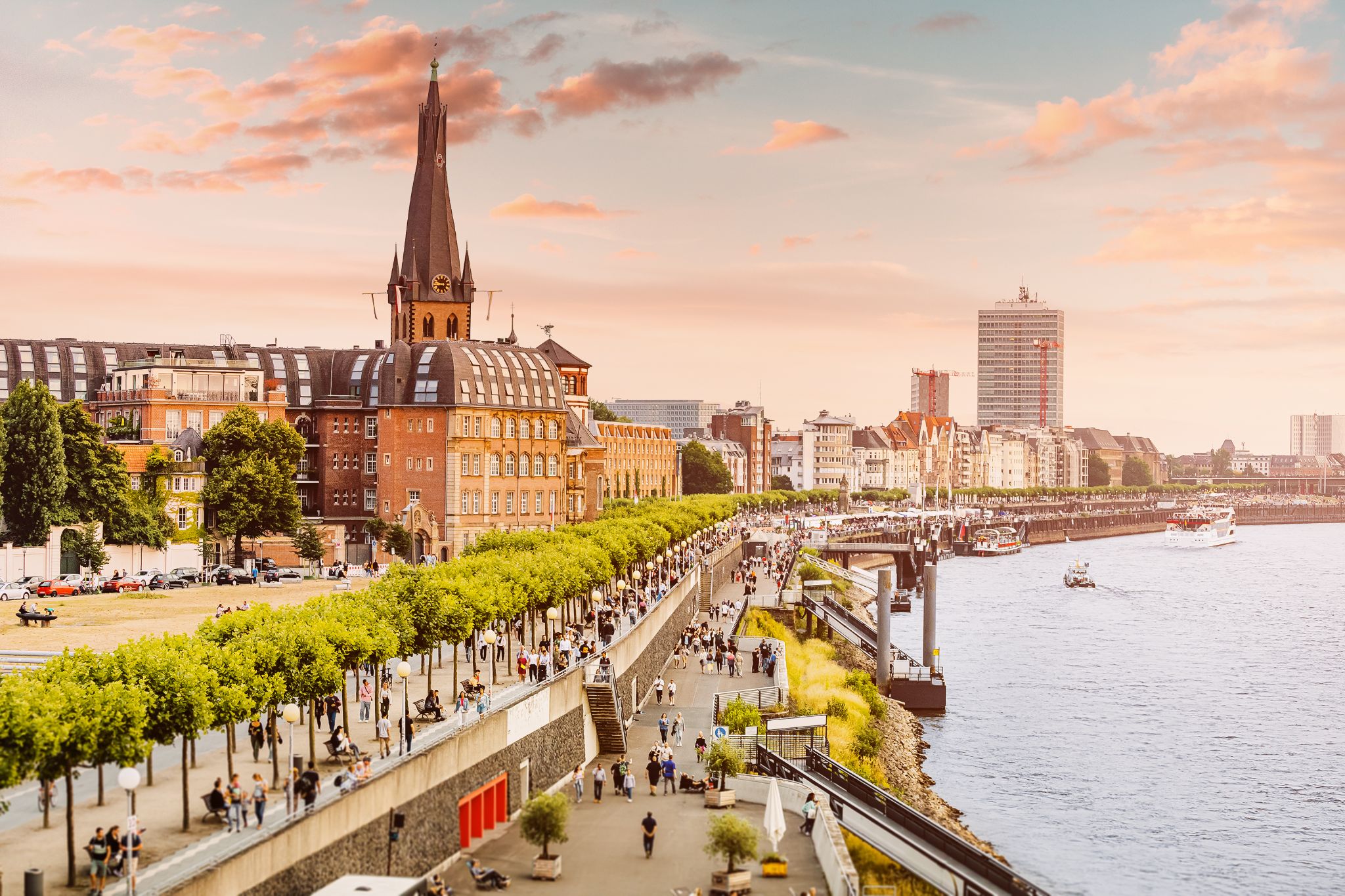
Düsseldorf jest stolicą i drugim co do wielkości miastem najludniejszego niemieckiego kraju związkowego Nadrenia Północna-Westfalia po Kolonii, a także siódmym co do wielkości miastem w Niemczech, liczącym 617 280 mieszkańców. Położone u zbiegu Renu i jego dopływu Düssel, miasto leży w centrum zarówno regionu Ren-Ruhr, jak i metropolitalnego regionu Nadrenii, z regionem Kolonia-Bonn na południu i Zagłębiem Ruhry na północy. Większość miasta leży na prawym brzegu Renu (w przeciwieństwie do Kolonii, której centrum leży na lewym brzegu rzeki). Miasto jest największym w niemieckim obszarze dialektu 1 dolnofrankońskiego (blisko spokrewnionego z językiem niderlandzkim). Sufiks "-dorf" (polski odpowiednik: -dorf, oznaczający "wieś" po niemiecku) jest niezwykły w niemieckojęzycznym obszarze dla osady wielkości Düsseldorfu.
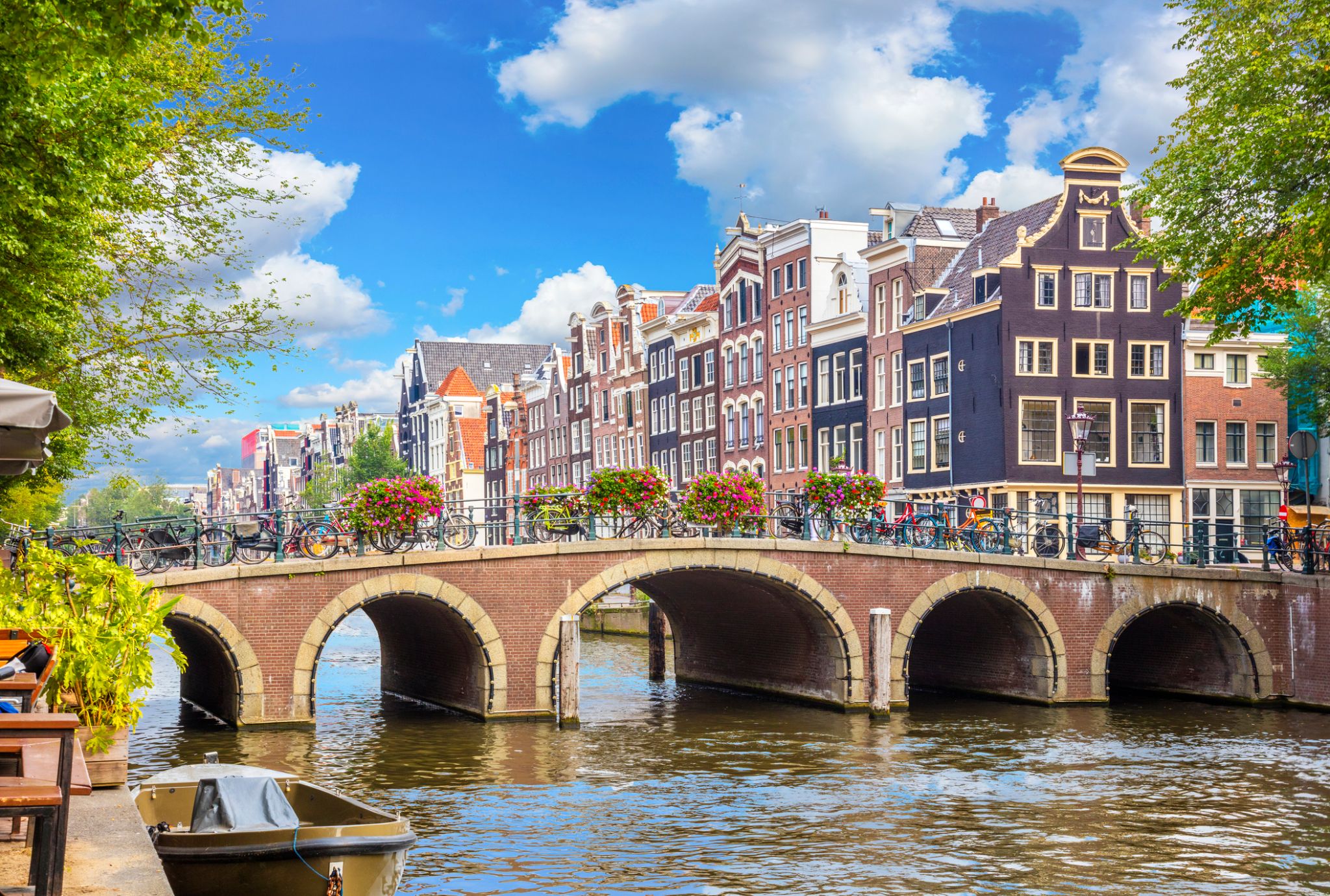
Amsterdam is the capital city and most populous municipality of the Netherlands. Its status as the capital is mandated by the Constitution of the Netherlands, although it is not the seat of the government, which is The Hague. Amsterdam has a population of 851,373 within the city proper, 1,351,587 in the urban area] and 2,410,960 in the metropolitan area. The city is located in the province of North Holland in the west of the country but is not its capital, which is Haarlem. The metropolitan area comprises much of the northern part of the Randstad, one of the larger conurbations in Europe, with a population of approximately 8 million.
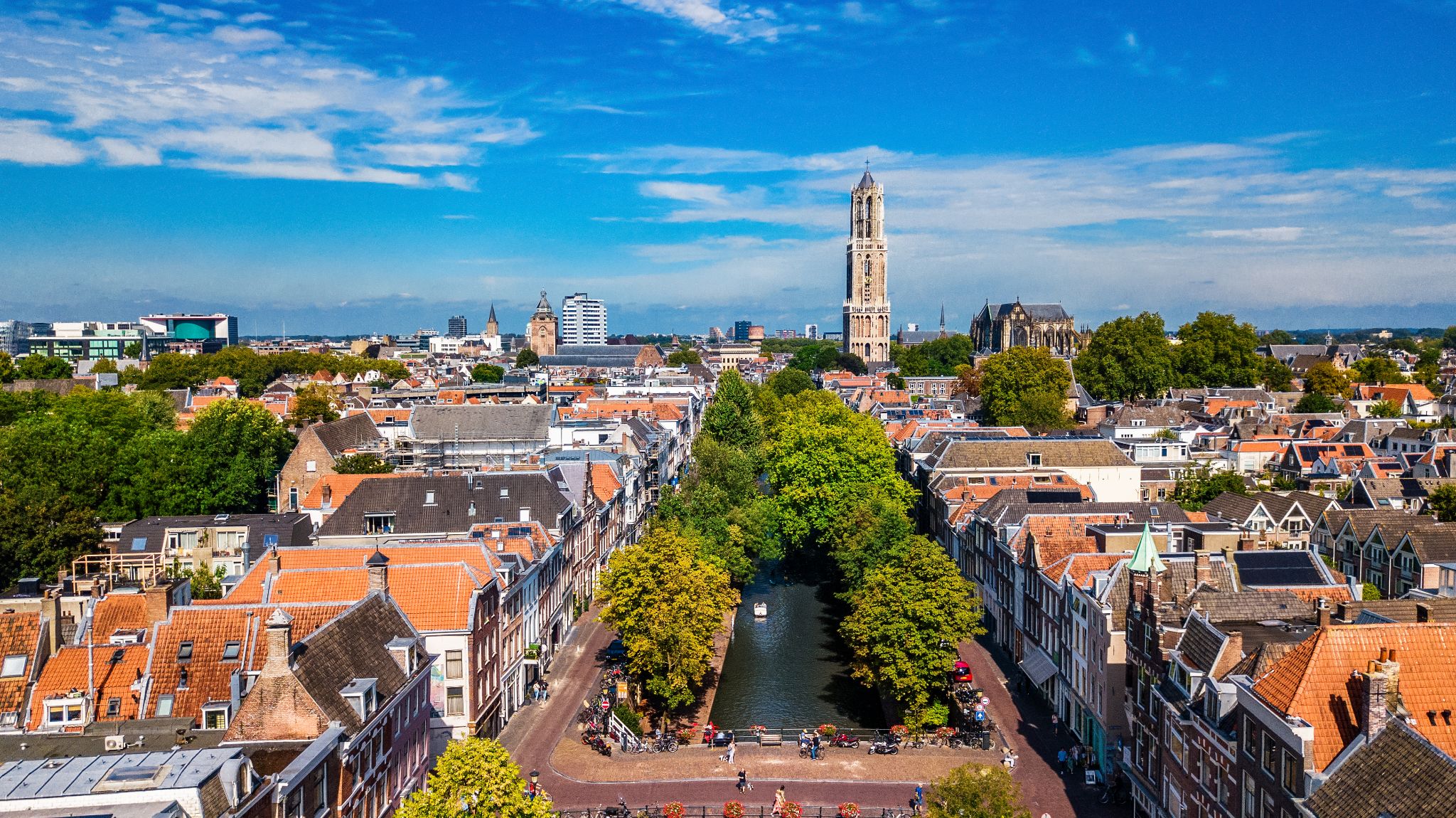
Utrecht jest czwartym co do wielkości miastem i gminą Holandii, stolicą i najbardziej zaludnionym miastem prowincji Utrecht. Położony jest we wschodnim krańcu konurbacji Randstad oraz w samym centrum kontynentalnej Holandii, a w 2017 roku liczył 345 080 mieszkańców.
Starożytne centrum Utrechtu charakteryzuje się licznymi budynkami i konstrukcjami, z których wiele pochodzi z wczesnego średniowiecza. Od VIII wieku jest religijnym centrum Holandii. Utracił status biskupstwa książęcego, ale pozostaje głównym ośrodkiem religijnym w kraju. Utrecht był najważniejszym miastem Holandii aż do Złotego Wieku Niderlandów, kiedy to Amsterdam prześcignął go jako centrum kulturalne i najbardziej zaludnione miasto kraju.
W Utrechcie znajduje się Uniwersytet Utrechcki, największy uniwersytet w Holandii, a także kilka innych instytucji szkolnictwa wyższego. Ze względu na swoje centralne położenie w kraju, jest ważnym węzłem komunikacyjnym zarówno dla transportu kolejowego, jak i drogowego. Po Amsterdamie ma drugą co do wielkości liczbę wydarzeń kulturalnych w Holandii. W 2012 roku Lonely Planet umieścił Utrecht w pierwszej dziesiątce najbardziej niedocenianych miejsc na świecie.

Amsterdam is the capital city and most populous municipality of the Netherlands. Its status as the capital is mandated by the Constitution of the Netherlands, although it is not the seat of the government, which is The Hague. Amsterdam has a population of 851,373 within the city proper, 1,351,587 in the urban area] and 2,410,960 in the metropolitan area. The city is located in the province of North Holland in the west of the country but is not its capital, which is Haarlem. The metropolitan area comprises much of the northern part of the Randstad, one of the larger conurbations in Europe, with a population of approximately 8 million.
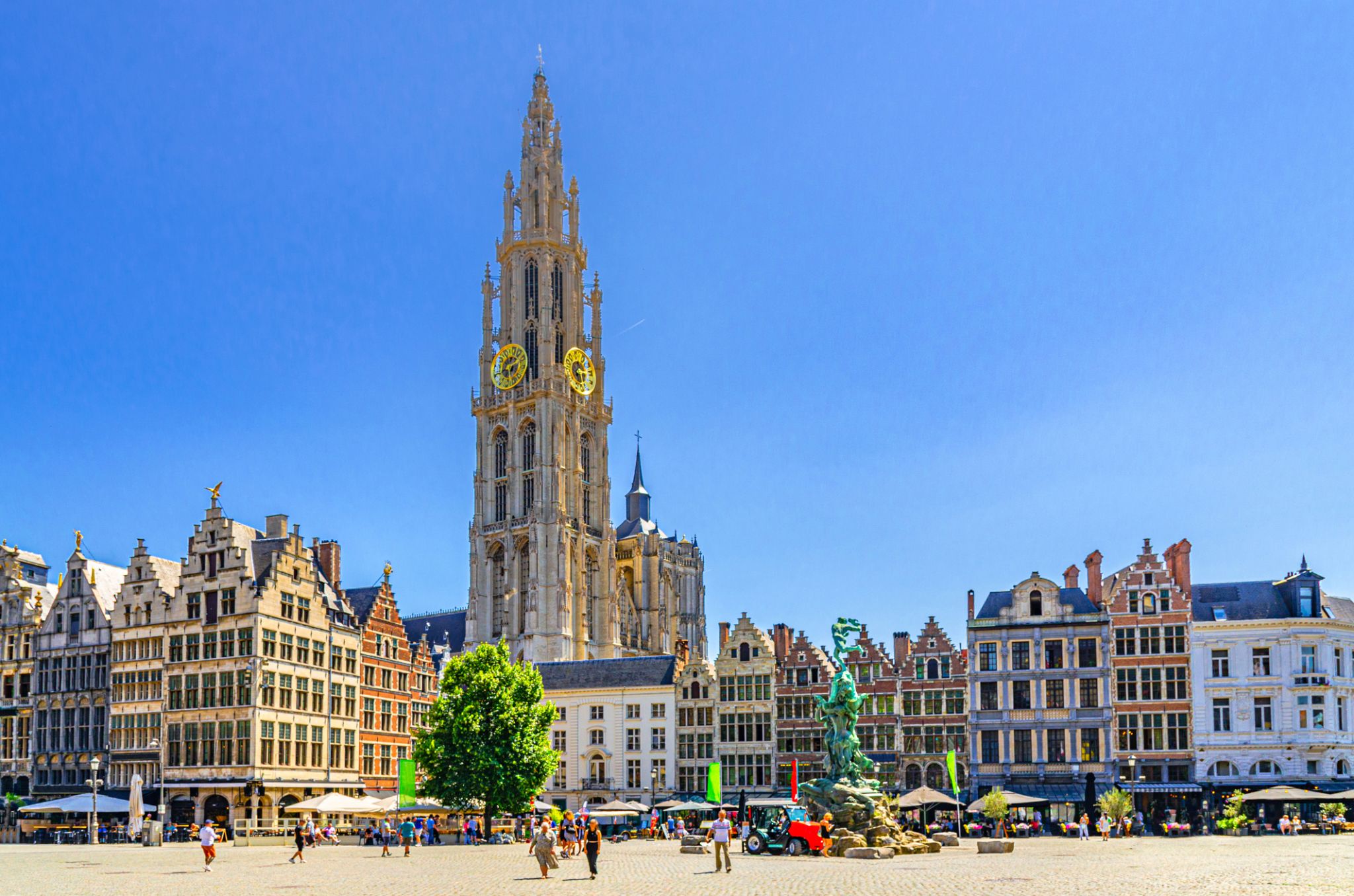
Antwerp is a city and a municipality in the Flemish Region of Belgium. It is the capital and largest city of Antwerp Province, and the third-largest city in Belgium by area at 208.22 km2 (80.39 sq mi), after Tournai and Couvin. With a population of 565,039, it is the most populous municipality in Belgium, and with a metropolitan population of over 1.2 million people, the country's second-largest metropolitan area after Brussels.
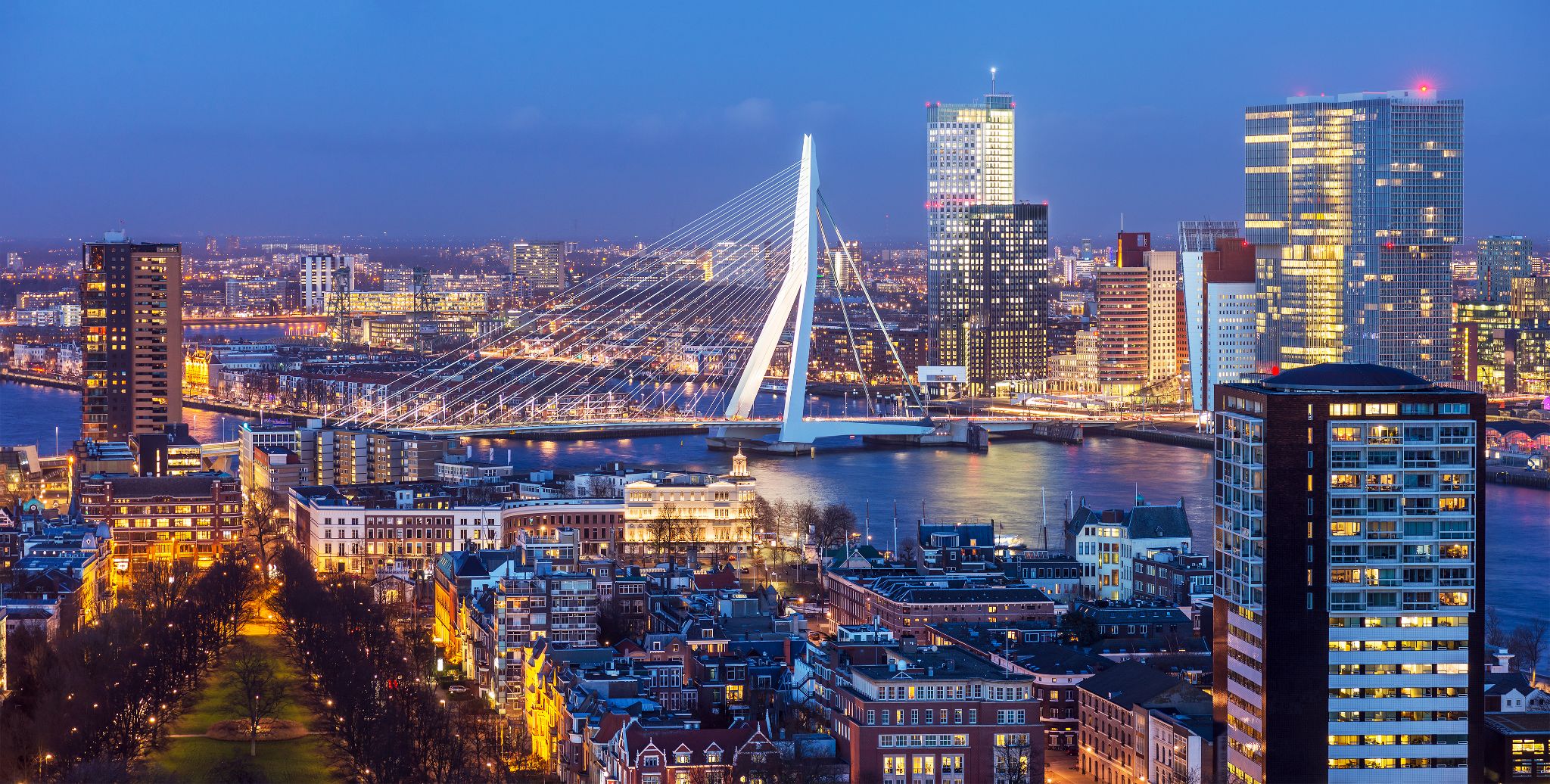
Rotterdam is the second-largest city and a municipality of the Netherlands. It is located in the province of South Holland, at the mouth of the Nieuwe Maaschannel leading into the Rhine–Meuse–Scheldt delta at the North Sea. Its history goes back to 1270, when a damwas constructed in the Rotte, after which people settled around it for safety. In 1340, Rotterdam was granted city rights by the Count of Holland.
A major logistic and economic centre, Rotterdam is Europe's largest port. It has a population of 633,471 (2017).Rotterdam is known for its Erasmus University, its riverside setting, lively cultural life and maritime heritage. The near-complete destruction of the city centre in the World War II Rotterdam Blitz has resulted in a varied architectural landscape, including sky-scrapers (an uncommon sight in other Dutch cities) designed by renowned architects such as Rem Koolhaas, Piet Blom and Ben van Berkel.
The Rhine, Meuse and Scheldt give waterway access into the heart of Western Europe, including the highly industrialized Ruhr. The extensive distribution system including rail, roads, and waterways have earned Rotterdam the nicknames "Gateway to Europe" and "Gateway to the World".

Antwerp is a city and a municipality in the Flemish Region of Belgium. It is the capital and largest city of Antwerp Province, and the third-largest city in Belgium by area at 208.22 km2 (80.39 sq mi), after Tournai and Couvin. With a population of 565,039, it is the most populous municipality in Belgium, and with a metropolitan population of over 1.2 million people, the country's second-largest metropolitan area after Brussels.

Gorinchem, pisane czasem jako Gorcum lub Gorkum – miasto w południowej Holandii, w prowincji Holandia Południowa.
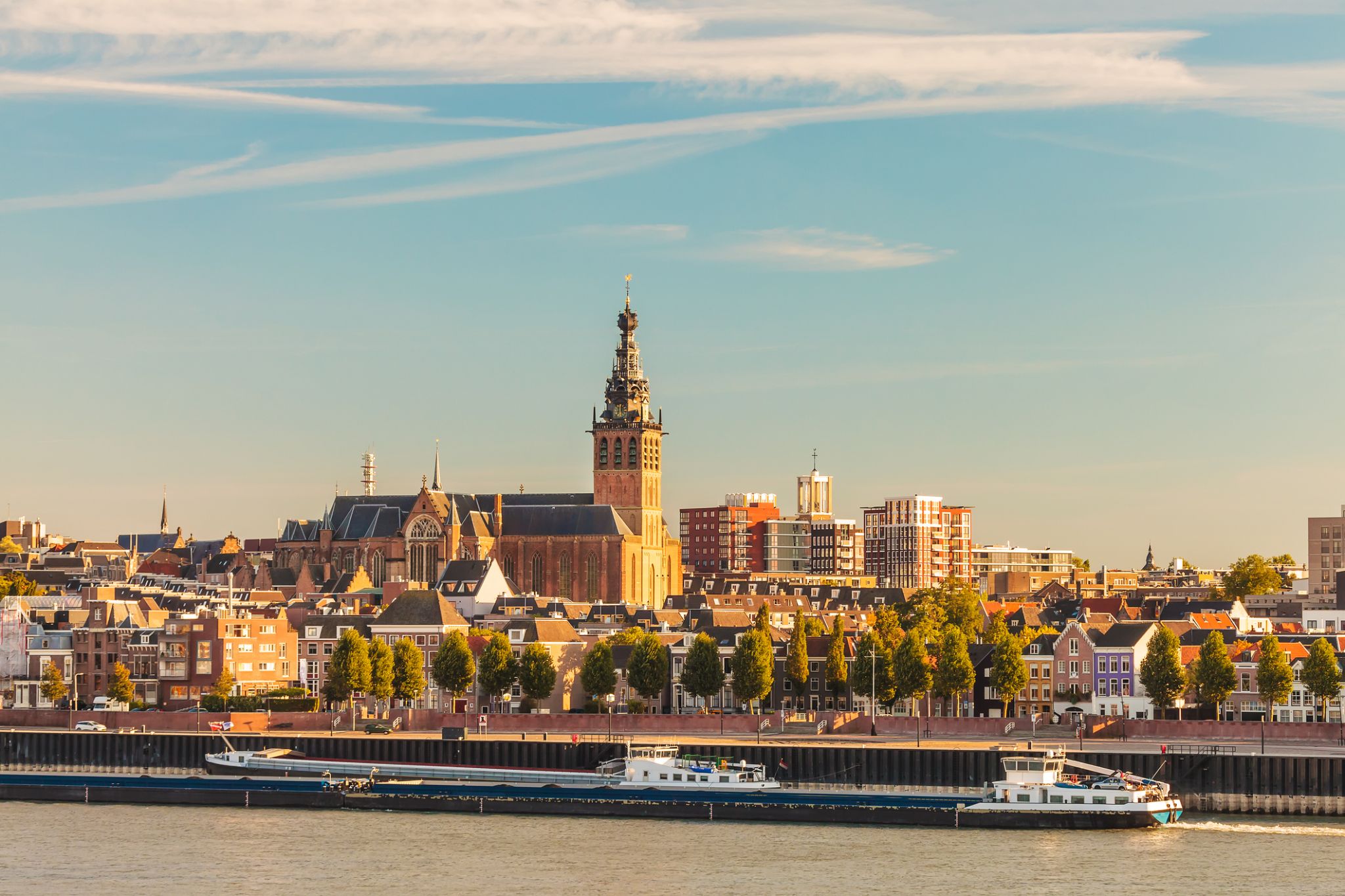
Na południowym brzegu rzeki Waal znajduje się miasto Nijmegen, duże centrum przemysłowe, w którym szczególnie rozwinięte są produkcja cegieł, przemysł chemiczny, wyroby tytoniowe i urządzenia elektryczne. Jedną z najbardziej interesujących budowli jest konstrukcja w kształcie wieloryba nad brzegiem Waal – to centrum zarządzania ruchem rzecznym, ponieważ Nijmegen pełni także funkcję portu rzecznego. W pobliżu znajduje się rzeźba fikcyjnej bohaterki Mariken van Nijmegen, która stała się symboliczną postacią miasta.
W Nijmegen mieści się również wyjątkowe Narodowe Muzeum Rowerów "Velorama". Co ciekawe, to jedyne tego typu muzeum w Holandii, mimo ogromnej popularności rowerów w tym kraju. Ekspozycje ukazują piękno i różnorodność transportu rowerowego. Obecnie kolekcja muzeum liczy ponad 500 egzemplarzy.

Rotterdam is the second-largest city and a municipality of the Netherlands. It is located in the province of South Holland, at the mouth of the Nieuwe Maaschannel leading into the Rhine–Meuse–Scheldt delta at the North Sea. Its history goes back to 1270, when a damwas constructed in the Rotte, after which people settled around it for safety. In 1340, Rotterdam was granted city rights by the Count of Holland.
A major logistic and economic centre, Rotterdam is Europe's largest port. It has a population of 633,471 (2017).Rotterdam is known for its Erasmus University, its riverside setting, lively cultural life and maritime heritage. The near-complete destruction of the city centre in the World War II Rotterdam Blitz has resulted in a varied architectural landscape, including sky-scrapers (an uncommon sight in other Dutch cities) designed by renowned architects such as Rem Koolhaas, Piet Blom and Ben van Berkel.
The Rhine, Meuse and Scheldt give waterway access into the heart of Western Europe, including the highly industrialized Ruhr. The extensive distribution system including rail, roads, and waterways have earned Rotterdam the nicknames "Gateway to Europe" and "Gateway to the World".

Na południowym brzegu rzeki Waal znajduje się miasto Nijmegen, duże centrum przemysłowe, w którym szczególnie rozwinięte są produkcja cegieł, przemysł chemiczny, wyroby tytoniowe i urządzenia elektryczne. Jedną z najbardziej interesujących budowli jest konstrukcja w kształcie wieloryba nad brzegiem Waal – to centrum zarządzania ruchem rzecznym, ponieważ Nijmegen pełni także funkcję portu rzecznego. W pobliżu znajduje się rzeźba fikcyjnej bohaterki Mariken van Nijmegen, która stała się symboliczną postacią miasta.
W Nijmegen mieści się również wyjątkowe Narodowe Muzeum Rowerów "Velorama". Co ciekawe, to jedyne tego typu muzeum w Holandii, mimo ogromnej popularności rowerów w tym kraju. Ekspozycje ukazują piękno i różnorodność transportu rowerowego. Obecnie kolekcja muzeum liczy ponad 500 egzemplarzy.

Düsseldorf jest stolicą i drugim co do wielkości miastem najludniejszego niemieckiego kraju związkowego Nadrenia Północna-Westfalia po Kolonii, a także siódmym co do wielkości miastem w Niemczech, liczącym 617 280 mieszkańców. Położone u zbiegu Renu i jego dopływu Düssel, miasto leży w centrum zarówno regionu Ren-Ruhr, jak i metropolitalnego regionu Nadrenii, z regionem Kolonia-Bonn na południu i Zagłębiem Ruhry na północy. Większość miasta leży na prawym brzegu Renu (w przeciwieństwie do Kolonii, której centrum leży na lewym brzegu rzeki). Miasto jest największym w niemieckim obszarze dialektu 1 dolnofrankońskiego (blisko spokrewnionego z językiem niderlandzkim). Sufiks "-dorf" (polski odpowiednik: -dorf, oznaczający "wieś" po niemiecku) jest niezwykły w niemieckojęzycznym obszarze dla osady wielkości Düsseldorfu.